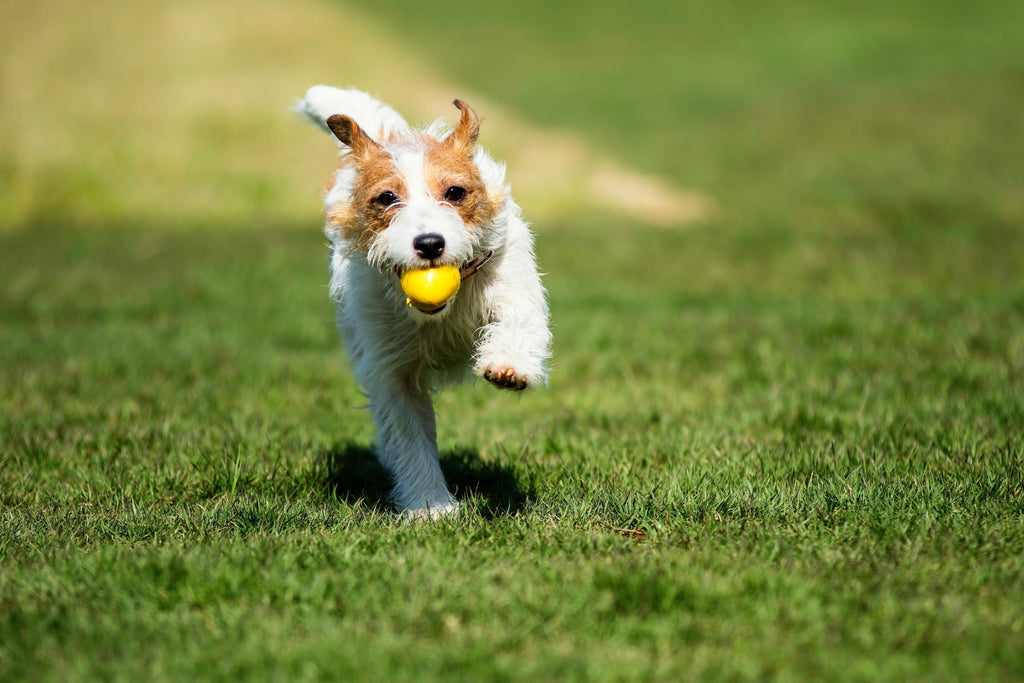DIY First Aid Tips and First Aid Kit for Your Dog

As a dog owner, you must be prepared for nearly anything to happen–including accidents that require first aid. You’re the person that spends the most time with your dog, you need to be prepared to be the first to respond in case of an accident. Knowing what to do should your dog get injured could be a matter of life or death as you make your way to the veterinarian. The first step to keeping your dog safe is to put together a DIY dog first aid kit, the next is to know what to do in a variety of situations. In this article, you will learn to do both of these.
Here are some basic doggy first-aid tips that you might find helpful.
Record Emergency Phone Numbers
Of course, you have your veterinarian’s phone number, but you need a few other numbers on-hand for those unique emergency situations. Keep the number and location of an emergency veterinarian and clinic in case your dog gets into trouble after business hours.
You also want to save the number to the Animal Poison Helpline:
- 1300 TOX PET (1300 869 738)
Hopefully, you will never need them, but it's comforting to know that they are there, just in case.
Put Together Your Dog First Aid Kit

While there are many first aid kits on the market, few have everything you need to respond to the wide range of medical emergencies dogs can get into. So, you may want to create your own and keep it somewhere easy to locate.
You want it to include:
- Gauze pads and rolls
- Adhesive tape
- Scissors
- Antiseptic wipes or solution
- Hydrogen peroxide (3%)
- Disposable gloves
- Tweezers
- Digital thermometer (Temperature should be between 37.5°C to 39.2°C)
- Sterile saline solution
- Tick remover tool
- Muzzle or restrain
- Emergency contact numbers
- Emergency blanket
- Compact first aid manual for pets
While you don’t need everything on this list, it is a good idea to have most of the things. Keep in mind, you might want a first aid kit for the home and another for the car. If you don’t opt for two, remember to always take your kit with you when you are travelling with your forever friend!
How to Respond to the Most Common Dog Emergencies

You can’t always predict when and where your doggo might need help, so the wise dog pawrent will do their best to be prepared. Many organisations offer first aid courses for pet owners. Taking one is a great way to build your knowledge and give you some hands-on experience.
In the meantime, read over these scenarios, so you don’t waste time Googling what to do should your dog find themselves in trouble.
1. Snake Bite
Snake bites in dogs can be a serious concern, especially in areas where venomous snakes are prevalent. In fact, between 6,000- 60,0000 dogs get bitten by snakes each year in Australia, and are most sporting dogs (Golden Retrievers, Labradors, Spaniels and Jack Russel Terriers).
Symptoms of Snake Bite:
The symptoms of a snake bite in a dog can vary depending on factors such as the type of snake, the amount of venom injected, and the location of the bite. However, common symptoms to watch for include:
- Pain and tenderness
- Swelling
- Lethargy
- Vomiting and diarrhoea
- Difficulty breathing
- Changes in heart rate
- Neurological signs (tremors, seizures, or paralysis)
When a dog is bitten by a snake, it's essential to remain calm and act quickly. The first step is to carefully identify the snake if possible, but never put yourself at risk of being bitten. Next, it's crucial to keep the affected limb or area immobilized to slow the spread of venom. Keep your pet calm and quiet, and apply a pressure bandage – a firm bandage placed over and around the bite site – to help slow the venom from spreading to his heart. Do not wash the wound or apply a tourniquet, as leaving the venom on the skin can later help identify the type of snake and a tourniquet can cause local tissue damage.
Transport your dog to the nearest veterinary clinic or emergency facility immediately for proper treatment. Time is of the essence when dealing with snake bites, so seek professional veterinary care as soon as possible!
2. Tick Paralysis
For those lucky enough to live in the colder climates of Australia, Tick Paralysis may not be much of a risk for your dogs, but for those living along the Eastern Coast and bushland areas, they are a real and serious threat to your pets!
Tick paralysis is a potentially fatal condition caused by the neurotoxin produced in the saliva of certain species of ticks, most notably the paralysis tick (Ixodes holocyclus) in Australia.
Symptoms of Tick Paralysis
-
Weakness and lethargy: The affected animal may appear weak, tired, or unwilling to move. This weakness can progress over time and may affect all four limbs.
-
Change in Bark : Dogs with tick paralysis may develop a change in their bark or voice due to weakness affecting the muscles involved in vocalization.
-
Difficulty swallowing: As the paralysis spreads, affected animals may have difficulty swallowing or may drool excessively.
-
Uncoordinated movements: Loss of coordination and stumbling are common signs of tick paralysis, as the toxin affects nerve signals to the muscles.
-
Vomiting and regurgitation: Some animals may vomit or have difficulty keeping food down due to paralysis affecting the muscles of the digestive tract.
-
Labored breathing: Tick paralysis can lead to respiratory muscle weakness, resulting in difficulty breathing, rapid breathing, or even respiratory distress.
-
Change in pupil size: In some cases, tick paralysis can cause changes in pupil size or responsiveness to light due to the involvement of nerves controlling the muscles of the eye.
-
Paralysis: In severe cases, tick paralysis can progress to complete paralysis, affecting not only the limbs but also the muscles involved in breathing and other vital functions.
Its an age old myth that if you find a tick on your dog, that you should not remove it. This is a myth! Remove the tick as soon as possible! With steady pressure, pull the tick straight out of your dog's skin. Avoid twisting or jerking motions, as this can cause the mouthparts to break off and remain lodged in the skin. If the tick does break and the head remains in your dog, don't worry, this will not cause any further risk to your dog, and your dogs body will help to naturally push the foreign object out from the skin.
Once you have removed the tick, go to the vet ASAP, even if your dog is not showing symptoms! The toxin from the tick can take several hours to start causing symptoms, and once they do start, it may be too late. There also many be other ticks hiding in your dogs coat! Ticks look for warm, dark moist spots, so their most common hiding spots are in ears, gums, around the neck and groin!
Have your Vet check over your pet, they will perform a thorough exam to ensure that they either require additional treatment (tick antiserum) or may require intravenous fluids to keep them hydrated, as often dogs can lose their ability to swallow if affected by a tick. They will also likely perform a tick clip or wash to ensure there are no other ticks hidden on your dog!
3. Heat Stroke
Despite being avoidable, sadly many dogs still suffer from heat stroke, especially in summer.
Heat stroke in dogs occurs when their body temperature rises to dangerous levels due to exposure to excessive heat and humidity, commonly during hot weather, strenuous exercise, confinement in poorly ventilated spaces like cars or rooms, and for certain breeds like brachycephalic dogs. In dogs, a body temperature above 39.4°C is considered elevated, and temperatures above 40.6°C are indicative of heat stroke.
Dogs left outdoors without shade or water, overexerted during activities, or confined in enclosed spaces such as being left in a car with inadequate ventilation are particularly vulnerable. Additionally, pre-existing health conditions, age, and breed, in particular bulldogs, pugs, boxers, boston terries have an increased susceptibility.
If you suspect your dog is experiencing heat stroke, act swiftly to cool them down and seek veterinary attention! Move your pet to a shaded or air-conditioned area immediately and wet them with cool water. Offer small amounts of cool water and use a fan to aid in evaporation. It is important to continuously monitor their temperature and stop cooling efforts once it reaches around 39.4°C to avoid overcooling, which can lead to hypothermia.
4. Cuts and Wounds
Hopefully, you will never need to know how to treat your furry friend if they get a cut or are bitten by another animal, but it is comforting to know how to do it, just in case. Here’s what you should do:
- Muzzle your dog: Even if they have never bitten you before, you will be touching a potentially very painful area, and they are likely scared and anxious, which could cause them to unintentionally nip at you when you are treating their wound.
- Stop the bleeding first by applying gentle pressure on the wound.
- You might need to shave the area if there is a lot of hair.
- Clean the wound by spraying it with water or saline solution.
- If there is any debris, remove it with a pair of tweezers.
- Disinfect the area with diluted betadine or chlorhexidine.
- Dress the wound lightly to keep it covered while you take your dog to the vet.
- Depending on the wound, if you have an ecollar it may be appropriate to put on your dog, to prevent them from licking or causing further damage to the wound.
5. Burns (Non-Chemical)
If your furry friend gets burned or scalded, here is what to do:
- The first thing that you want to do is to cool the burn by running cool water over the area that is affected. Don’t touch the burn, and if you must, use sterile gloves so that it doesn’t get infected.
- You can also cool and clean the area using saline solution.
- Do not apply any creams or ointments. You do not want to apply ice either.
- Get your dog to the vet as soon as possible.
- Apply silver sulfadiazine ointment and cover with sterile gauze until you can get your dog to a vet or an emergency clinic.
Get your dog to a professional as soon as possible, especially if the burn begins to blister. We recommend calling your vet on the way, so they’re ready to go when you arrive.
6. Poisons and Chemicals
There are many types of chemicals and poisons that your dog might get into, so make sure that you have the phone number of the appropriate pet poison hotline available just in case you ever need it.
If your doggo has ingested something or you think that your dog has, look for and record the symptoms. This information is needed when you call your vet or the hotline.
Common Household Poisons to Dogs
- Chocolate: Contains theobromine, which is toxic to dogs.
- Grapes and raisins: Can cause kidney failure in some dogs.
- Xylitol: Found in sugar-free gum, candy, and some peanut butter, it can cause a rapid release of insulin leading to hypoglycemia (low blood sugar).
- Onions and garlic: Contains compounds that can damage a dog's red blood cells, leading to anemia.
- Household cleaners: Many household cleaners contain chemicals that are toxic if ingested, such as bleach, ammonia, and toilet bowl cleaners.
- Rodenticides: Rat and mouse poisons can be enticing to dogs but are extremely toxic and can cause internal bleeding.
- Antifreeze: Contains ethylene glycol, which is highly toxic to dogs even in small amounts.
- Certain plants: Some common houseplants like lilies, azaleas, and tulips can be toxic to dogs if ingested.
- Medications: Human medications, especially painkillers like ibuprofen and acetaminophen, can be dangerous to dogs if ingested.
-
Pesticides and insecticides: Chemicals used to kill pests can also harm dogs if ingested.
Depending on what your dog has come in contact with, you might need to make them vomit, however it is imperative to note you should speak to your Vet before performing this, as making a dog vomit can lead to potential aspiration! To do this, you will need one of the following:
- Salt water–Follow instructions from your vet because ingesting large amounts of salt can cause other health problems.
- Hydrogen peroxide–3% hydrogen peroxide at 1-2 teaspoons per 10 lbs
Your vet or the poison hotline will let you know which is best for your circumstance.
Try to keep all cleaning products, pesticides, petroleum products in a place that your dog can’t go. It will save you a lot of work and stress, and it may very well save your dog’s life.
7. Seizures
When these happen, remain calm–your dog really can’t feel these and they are probably unconscious.
But if your dog has never had one, this is what to do:
-
Stay calm: It's essential to stay as calm as possible during the seizure.
-
Ensure safety: Remove any objects or obstacles near your dog to prevent injury during the seizure. Keep other pets and children away to avoid any accidental harm.
-
Time the seizure: Note the time when the seizure begins. This information can be helpful for your veterinarian in assessing your dog's condition and determining the best course of action.
-
Protect the airway: If your dog is unconscious and appears to be choking on saliva or vomit, gently roll them onto their side to help clear the airway. Do not attempt to put your fingers or any objects into your dog's mouth during a seizure, as this can lead to accidental biting and injury.
-
Monitor breathing: Keep a close eye on your dog's breathing. If their breathing becomes shallow or stops altogether, you may need to perform artificial respiration. However, this should only be done if you are trained in animal first aid and feel comfortable doing so.
-
Seek veterinary care: After the seizure has ended and your dog regains consciousness, contact your veterinarian immediately. They can provide guidance on next steps, including potential causes of the seizure and appropriate treatment options.
Most types of seizures are not life-threatening. So stay calm and call your vet when your dog regains consciousness.
Protect Your Pet’s Life: Be Prepared

You love your dog and want them to have the longest, healthiest, happiest life possible. But accidents do happen. The best thing that you can do is to be prepared. Have a well-stocked 1st aid kit ready and have the necessary phone numbers. You might want to print instructions for treating your doggo and include them with your 1st aid kit.
Always remember to stay calm–if you are panicking, you won’t be able to help your dog.
[1] Dog Choking: What to Do & Heimlich Maneuver For Dogs
[2] Red Cross CPR






